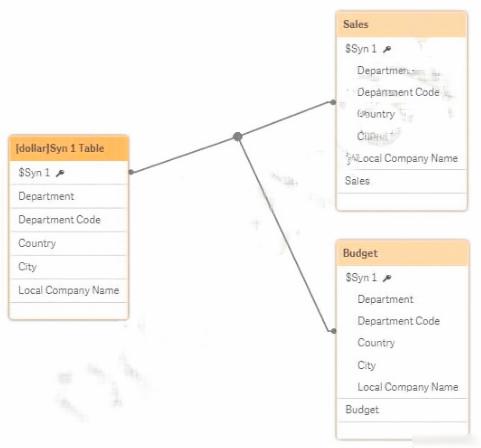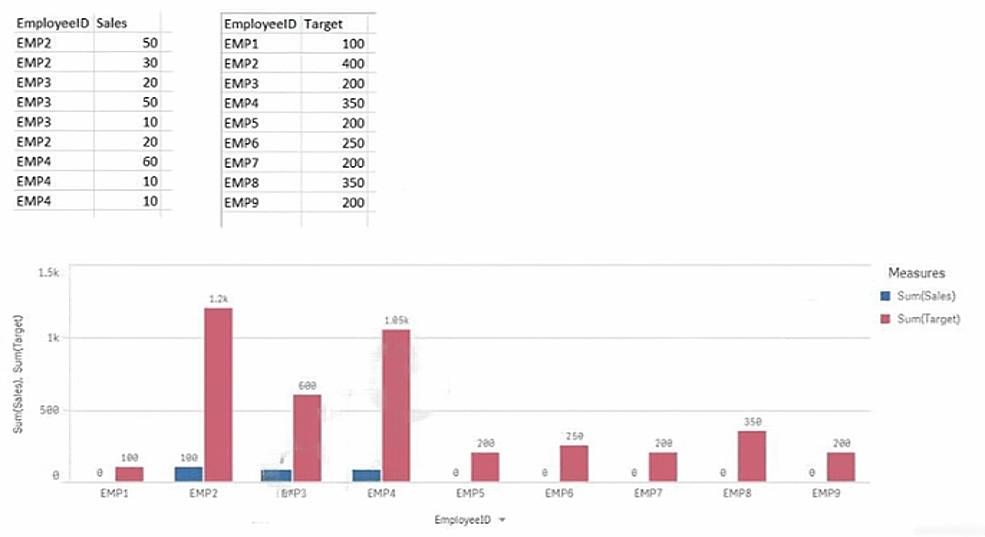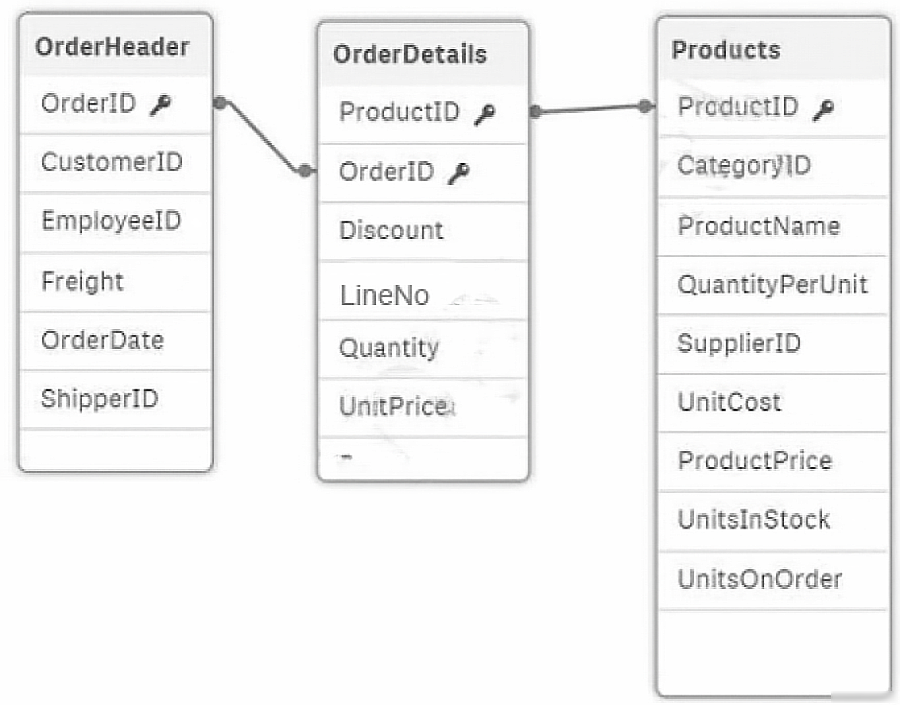QlikView QSDA2018 Exam Practice Questions (P. 2)
- Full Access (50 questions)
- Six months of Premium Access
- Access to one million comments
- Seamless ChatGPT Integration
- Ability to download PDF files
- Anki Flashcard files for revision
- No Captcha & No AdSense
- Advanced Exam Configuration
Question #6
Refer to the exhibit.

The business analyst previews some data and notices different values for the United States in the Country field. The analyst must be able to report the total sales for the United States. The data architect must fix this issue in the LOAD script.
Which function should the data architect use to fix data quality issue?

The business analyst previews some data and notices different values for the United States in the Country field. The analyst must be able to report the total sales for the United States. The data architect must fix this issue in the LOAD script.
Which function should the data architect use to fix data quality issue?
- ASwitch
- BApplyMapMost Voted
- CCase
- DReplace
Correct Answer:
B
Reference:
https://community.qlik.com/t5/QlikView-App-Development/Help/td-p/921736
B
Reference:
https://community.qlik.com/t5/QlikView-App-Development/Help/td-p/921736
send
light_mode
delete
Question #7
Refer to the exhibit.

The data model shown has a synthetic key for information that contains actual sales and budget sales for a multi-national company. As a business requirement, users must be able to drill down by department and country. Data must not be lost. Due to data quality issues, some departments are NOT included in the Sales and Budget tables. The data architect needs a method to eliminate synthetic keys that generates the fastest performing data model.
Which method should the data architect use?

The data model shown has a synthetic key for information that contains actual sales and budget sales for a multi-national company. As a business requirement, users must be able to drill down by department and country. Data must not be lost. Due to data quality issues, some departments are NOT included in the Sales and Budget tables. The data architect needs a method to eliminate synthetic keys that generates the fastest performing data model.
Which method should the data architect use?
- AA link table to associate the two tables.
- BA forced concatenation statement.
- CField aliases or comment out redundant fields.
- DA Left Join statement in the script.
Correct Answer:
B
B
send
light_mode
delete
Question #8
Refer to the exhibit.

A data architect has two tables that contain Sales and target data for employees. The tables are loaded into Qlik Sense and are associated by EmployeeID. The data architect creates a bar chart of total Sales vs. Target. The architect notices some values for target are too high, and employees with NO sales should be excluded.
Which function should the data architect use to resolve these issues?

A data architect has two tables that contain Sales and target data for employees. The tables are loaded into Qlik Sense and are associated by EmployeeID. The data architect creates a bar chart of total Sales vs. Target. The architect notices some values for target are too high, and employees with NO sales should be excluded.
Which function should the data architect use to resolve these issues?
send
light_mode
delete
Question #9
Refer to the exhibit.

In the data load editor, the tables are loaded in the following sequence:
1. OrderHeader
2. OrderDetails
3. Products
The three tables CANNOT be modified as all fields are required. A data architect must create a Cost of Goods Sold (COGS) field calculated as UnitCost* Quantity.
Some products may NOT have UniCost, so the COGS value must be zero for these products.
How should the data architect meet this requirement?

In the data load editor, the tables are loaded in the following sequence:
1. OrderHeader
2. OrderDetails
3. Products
The three tables CANNOT be modified as all fields are required. A data architect must create a Cost of Goods Sold (COGS) field calculated as UnitCost* Quantity.
Some products may NOT have UniCost, so the COGS value must be zero for these products.
How should the data architect meet this requirement?
- A1. Load the Products table as the first table 2. Create a new field in the OrderDetails table: Quantity * IsNull (UnitCost) as COGS
- B1. Perform a preceding load on the Product table 2. Create a new field in the OrderDetails table: if((UnitCost ג€" null() or ג€, 0) * Quantity as COGS
- C1. Join the Products and OrderDetails on ProductID 2. Create a new field in the OrderDetails table: Replace(Null, 0, UnitCost) * Quantity as COGS
- D1. Create a mapping load table as the first table from the Product table 2. Create a new field to the OrderDetails table: ApplyMap ('UnitCost_Map', ProductID, 0) * Quantity as COGS
Correct Answer:
D
D
send
light_mode
delete
Question #10
Two companies have merged and full database integration is planned for next year. The data architect needs an interim solution to view all employee data from both companies.
✑ The tables come from different systems
✑ Both companies have similar Employees tables
✑ Both tables have identifiers for Employee and some other attributes (e.g., geographical information)
✑ The tables also have some fields that do NOT match (e.g., Social Security Number and Bank Account)
Which problem occurs when the two tables are loaded into Qlik Sense?
✑ The tables come from different systems
✑ Both companies have similar Employees tables
✑ Both tables have identifiers for Employee and some other attributes (e.g., geographical information)
✑ The tables also have some fields that do NOT match (e.g., Social Security Number and Bank Account)
Which problem occurs when the two tables are loaded into Qlik Sense?
- ALink tables are created
- BSynthetic keys are created
- CAn auto concatenation occurs
- DA circular reference occurs
Correct Answer:
B
B
send
light_mode
delete
All Pages
